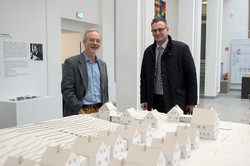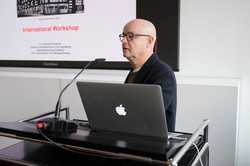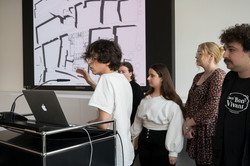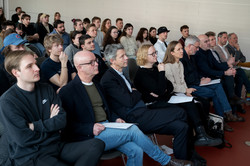Architecture Students Design Plans for Department Stores in Dortmund City Center
- Top News
- Studying & Teaching at TU Dortmund University
- Press Releases
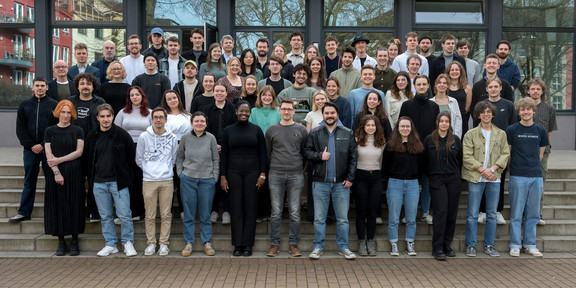
How can inner-city department stores and the area around them be revitalized through alternative concepts? This was the question that about 60 students from TU Dortmund University and three other European universities tackled at the 12th International Spring Academy. On 20 March they presented their designs at Baukunstarchiv NRW, North Rhine-Westphalia’s archive for architecture and civil engineering.
At the Spring Academy, the architecture students got to grips with three planning zones in Dortmund’s city center: the area around St. Petri Church with the former Kaufhof department store building, the central area with the Mayersche bookstore and Karstadt department store buildings, and the area around St. Reinoldi Church and St. Marien Church with the P&C and C&A buildings. The twelve inter-university teams had ten days to develop their ideas for the large buildings on Westenhellweg and Ostenhellweg, the main shopping streets in the city center. This year, students from TU Dortmund University, University of Applied Sciences Potsdam, Eindhoven University of Technology and Ghent University took part and contributed their different perspectives to the teamwork, with the support of lecturers from the four universities, the University of Naples Federico II and the University of Strathclyde, Glasgow.
“The topic is highly significant not only in Dortmund but in all European city centers,” says Adjunct Professor Olaf Schmidt, who is in charge of the Spring Academy together with Adjunct Professor Michael Schwarz. For a long time, department stores dominated the inner-city landscape. In recent years, however, reports of closures and vacant buildings, which have an impact on the whole city center, have become more and more frequent. Michael Schwarz explains: “The students analyzed the situation in Dortmund’s city center in depth and identified problems. On this basis, they then developed alternative concepts to loosen up the buildings’ monofunctionality and integrate them into the city with different uses and a new appearance overall. In the process, they also partly redefined the city center.”
Concepts for a mixed-use city
The result was a broad range of proposals with a common goal: a city with mixed uses that is agreeable to all generations. “The students themselves were accommodated in the city center during the Spring Academy and observed, for example, that the pedestrian zone is hardly frequented at all outside store and office opening hours,” says Michael Schwarz. “That is why they have developed ideas to revitalize the area with a mix of shops, educational institutions, leisure and cultural facilities as well as residential buildings and offices.” In their designs, the students integrate the buildings into the urban context architecturally by creating relationships with the surrounding area, in particular the churches and squares.
Stefan Szuggat, Head of the City of Dortmund’s Department for Environment, Planning and Housing, also attended this year’s launch and closing event. Olaf Schmidt was delighted at the dialog between the Spring Academy and the city: “The exchange of ideas between the City of Dortmund and TU Dortmund University, especially in relation to architecture and urban development, benefits both sides in various ways, and this can have a positive effect on the city’s further development. Through the public presentation of the workshop results as part of the final assessment and their subsequent publication, individual projects, or important parts of them, might well be incorporated in further considerations by the planning authorities or at least provide valuable stimuli. We would like to expand this enriching collaboration in the future.”
About the International Spring Academy
As a local equivalent to the Summer Academy in Venice, which has taken place for almost 40 years, the Department of Architecture and Civil Engineering at TU Dortmund University has staged the International Spring Academy every year since 2013. The thematic focus lies on Dortmund’s city center: Teams in recent years dealt with the B1 highway, the “Wall” (site of the Middle Age ramparts), Hellweg (an old trading route), squares in the inner city, Nordstadt (the northern part of Dortmund’s city center), urban wasteland, the densification of the “Unionviertel” district, the land conversion of the former Hoesch steelworks, large housing estates, entrances to the city and the port. The International Spring Academy enables both students and teaching staff to exchange ideas with colleagues from different countries, work together and establish long-term international contacts. There are plans to hold an International Spring Academy at TU Dortmund University again in 2025.


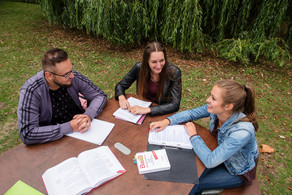
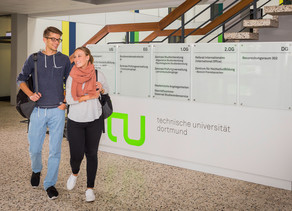
![[Translate to English:] Partner Four hands are holding the green logo of TU Dortmund University](/storages/tu_website/_processed_/1/d/csm_Partner_Nicole_Rechmann_KW_40b35bb3fd.jpg)

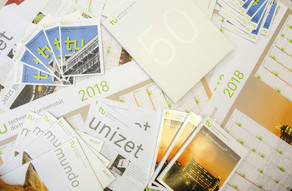
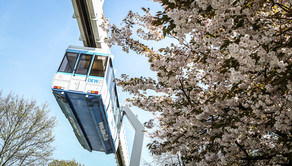
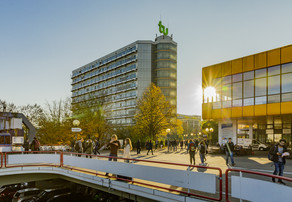
![[Translate to English:] Forschung An apparatus with tubes in a laboratory](/storages/tu_website/_processed_/0/c/csm_Forschung_Juergen_Huhn_cbd34afd6d.jpg)
![[Translate to English:] Studium Five students are sitting in a lecture hall. They are talking to each other.](/storages/tu_website/_processed_/c/9/csm_Studium_FelixSchmale_81d94adc86.jpg)
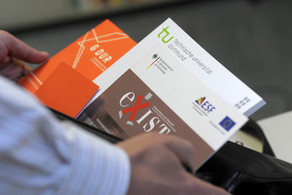
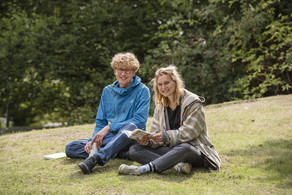

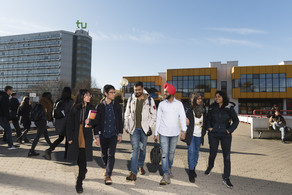

![[Translate to English:] [Translate to English:]](/storages/zentraler_bilderpool/_processed_/e/6/csm_Kopfbild-Mathetower_99c6701733.jpg)
